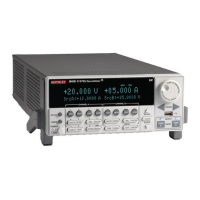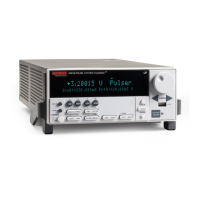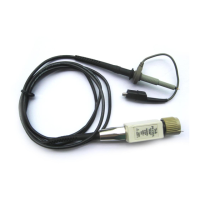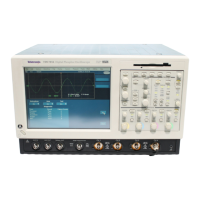Clearing registers
You can use commands to reset the status registers.
*CLS resets the bits of the event and NTR registers to 0 and sets all PTR register bits on. This
command also clears the output queue.
status.reset() resets bits of the event and NTR registers to 0 and sets all PTR register bits on.
Refer to status.reset() (on page 9-346) for additional information.
In addition to these commands, you can reset the enable registers and the NTR to 0. To do this, send
the individual command to program the register with a 0 as its parameter value. The PTR registers
can be reset to their defaults by programming them with all bits on. The event registers are not
programmable but you can clear them by reading them.
Programming enable and transition registers
The only registers that you can program are the enable and transition registers. All other registers in
the status structure are read-only registers. The following explains how to determine the parameter
values for the various commands used to program enable registers. The actual commands are
summarized in Common commands (on page 11-1) and Status function summary (on page 12-3).
A command to program an event enable or transition register is sent with a parameter value that
determines the state (0 or 1) of each bit in the appropriate register. The bit positions of the register
(see the following tables) indicate the binary parameter value and decimal equivalent. To program
one of the registers, send the decimal value for the bits to be set. The registers are discussed further
in Enable and transition registers (on page 12-19).
When using a numeric parameter, registers are programmed by including the appropriate mask value.
For example:
*ese 1169
status.standard.enable = 1169
To convert from decimal to binary, use the information shown in the above figure. For example, to set
bits B0, B4, B7, and B10, use a decimal value of 1169 for the mask parameter
(1169 = 1 + 16 + 128 + 1024).
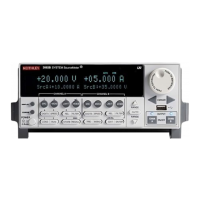
